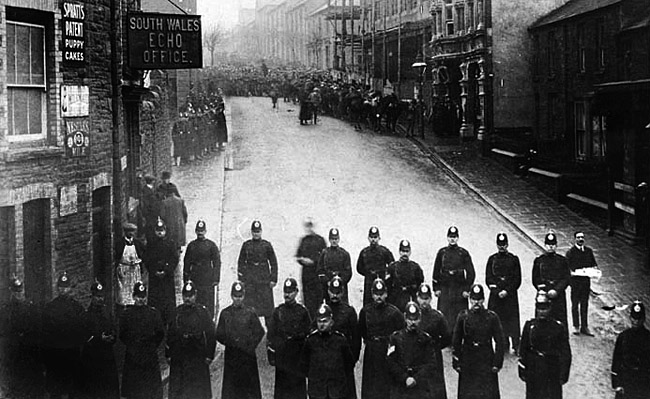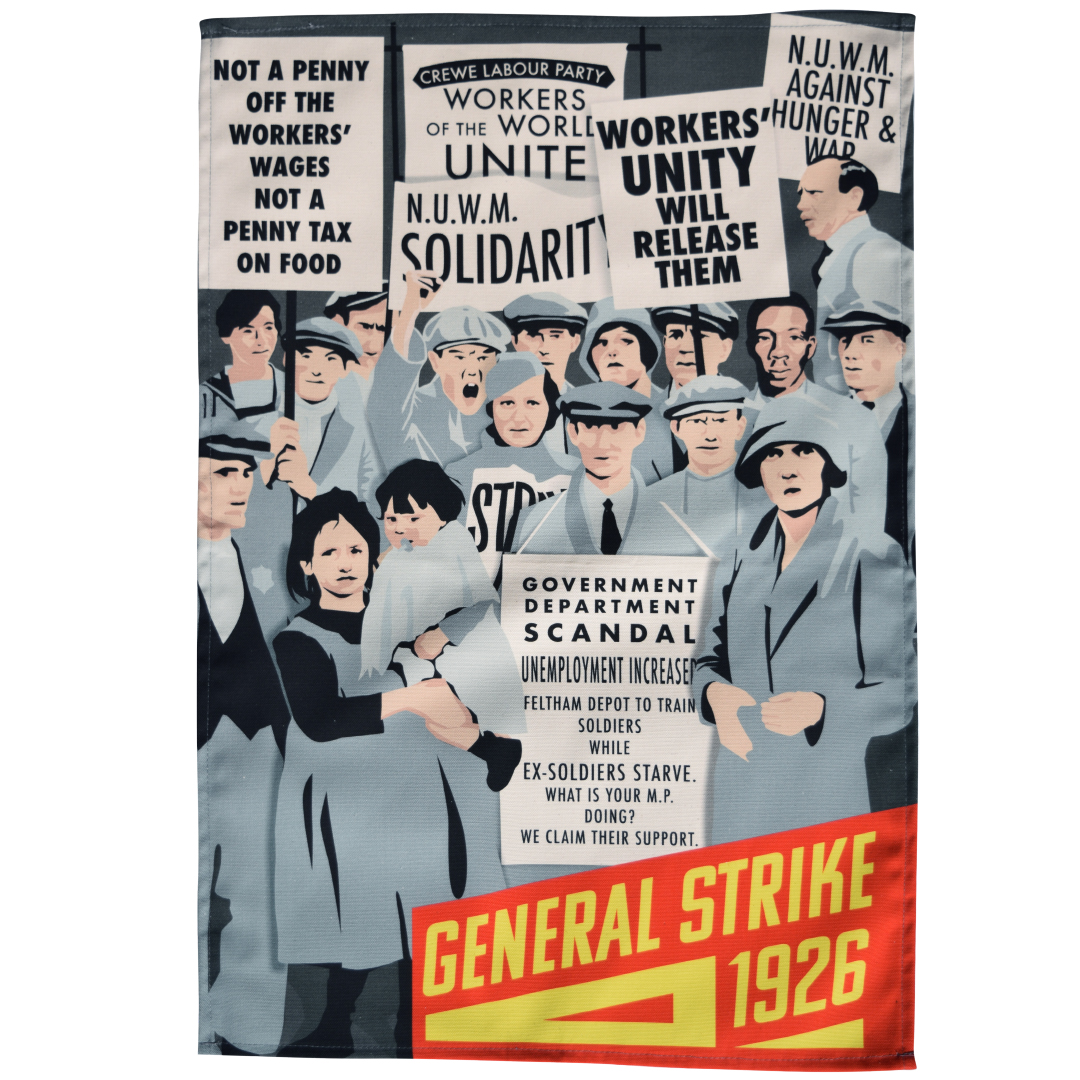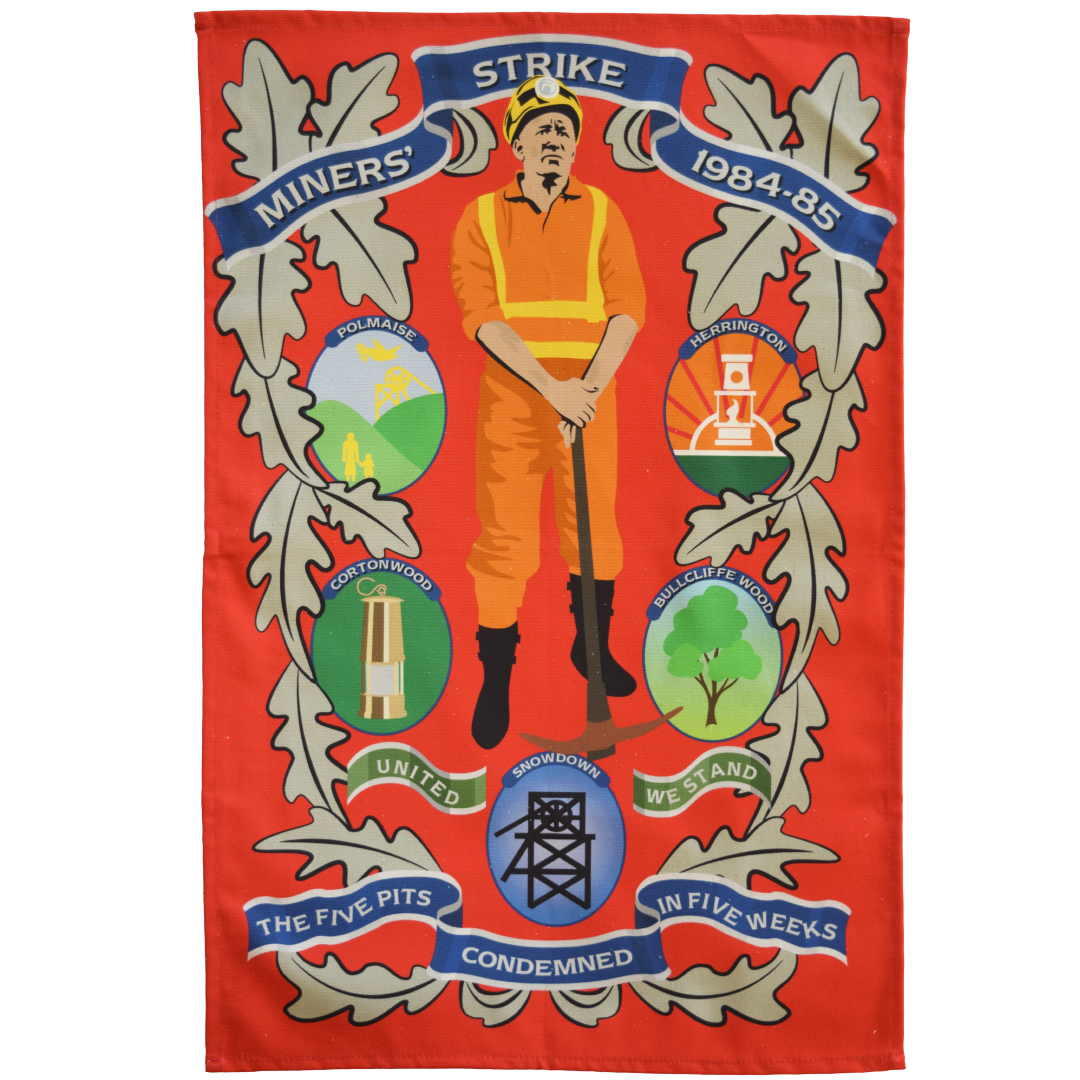Churchill vs The Miners: The Tonypandy Riots
Posted by Pete on 8th Nov 2021

The story of how the British government sent troops into the coalfields of South Wales...
Throughout the 20th century, coal miners were the steely vanguard of the British working class.
From strongholds in Yorkshire, Northumberland, Lanarkshire, and South Wales, organised mineworkers challenged the power of Britain’s wealthy elite time and again.
The revolutionary
General Strike of 1926 was spearheaded by the miners, and it was the National Union of Mineworkers (NUM) which beat Ted Heath’s anti-union effort in the 1970s.
Miners were powerful in Britain – and the ruling class knew it.
The General Strike of 1926 was the first countrywide strike in British history, launched in protest against worsening conditions in the mining industry.
Click to view our General Strike tea towel
State violence against the labour movement has been a routine in British history, and its number one target was for a long time those who dug the country’s coal.
Thatcher recognised the NUM had to be conquered if she was to crush the trade unions.
Like a Tory Genghis Khan, she unleashed waves of brutal violence on the Miners’ Strike culminating in the police riot at
Orgreave.
But she was not the first politician to go to war on the miners. Seventy years before Orgreave, there was Tonypandy.
The Battle of Orgreave, in South Yorkshire, was one of the most violent clashes in British industrial history.
Click to view our Battle of Orgreave tea towel
If there’s one place in Britain where Winston Churchill has a deeply ‘ambiguous’ legacy, it’s South Wales.
That’s because, in 1910, as Home Secretary he sent in the army to support local mine bosses in a dispute with the South Wales Miners’ Federation.
Wages were being kept low in the Rhondda Valley by a cartel of mine owners called the Cambrian Combine. It made the industrial situation tense.
At the beginning of September 1910, bosses began whining about productivity at the Ely Pit in Penygraig.
The dispute led to a strike and then the Cambrian Combine started bringing in strikebreakers. Pickets were deployed to counter.
In solidarity with the Ely Pit workers, the Miners’ Federation balloted the entire coalfield. By early November, all 12,000 men working for the Combine were on strike.
The miners had soon shut down almost all the local pits.
Here's our brand new Miners' Strike tea towel, designed in the fashion of a miners' union banner.
Click to view our Miners' Strike tea towel
Always at the beck and call of the bosses, local government officials began crying for police and military reinforcements from Churchill’s Home Office in London, which were readily given.
Army forces were deployed to the Glamorgan Colliery on 7 November to neutralise the pickets there.
On the night of 8-9 November, in the town of Tonypandy, there were a series of confrontations between the mining community and London-reinforced police.
The next day, a whole cavalry squadron of the Eighteenth Hussars was sent in to patrol the local mines.
By the close of play, over 400 outside police, a company of Lancashire Fusiliers, and the cavalry had been thrown at the miners in and around Tonypandy.
Over 500 strikers and strike-supporters had been injured. Samuel Rhys, a Welsh miner, was killed – probably by a policeman.
This wasn’t the last time the British state (or even Churchill specifically) would use armed force against striking workers during the 1910s. The other bookend of the decade was the
Battle of George Square in Glasgow.
In Tonypandy, state violence was the cheat code which let the coal bosses beat the striking miners.
The struggle at Tonypandy – and throughout radical history, from
Tolpuddle to George Square, Peterloo to Orgreave – is testament to the courage of the working class against the power of the boss, the baton, and the bayonet.
Key dates in the Tonypandy Riots:
- 1 September 1910: The coal bosses post a lockout notice against all 950 miners at the Ely Pit in Penygraig, who strike in response
- 1 November 1910: The South Wales Miners’ Federation successfully ballots the whole Cambrian Combine workforce for strike action
- 2 November 1910: Local government officials in the region begin inquiring about how to request military intervention against the miners
- 6 November 1910: The Chief Constable of Glamorgan had already imported 200 police to the Tonypandy area
- 7 November 1910: Fighting between miners and police breaks out at the Glamorgan Colliery, with police employing baton charges. Soldiers later sent to the Colliery.
- 8 November 1910: Severe fighting between heavily reinforced police and miners in Tonypandy.
- 9 November 1910: 18th Hussars deployed to the mines to reinforce the hundreds of outside police and soldiers already there.
- December 1910: 13 miners (no police, soldiers, politicians, or bosses) prosecuted for their part in the unrest of November, supported by solidarity demonstrations of at least 10,000 in the streets.



